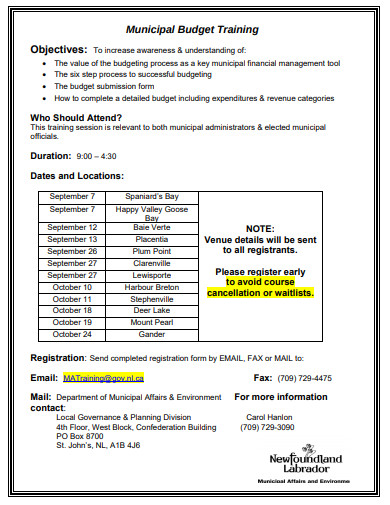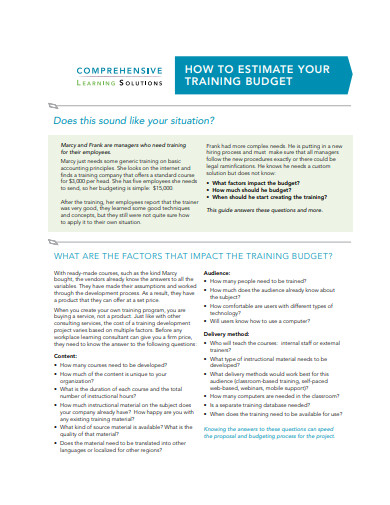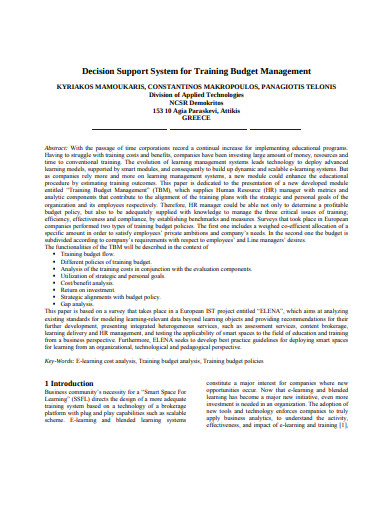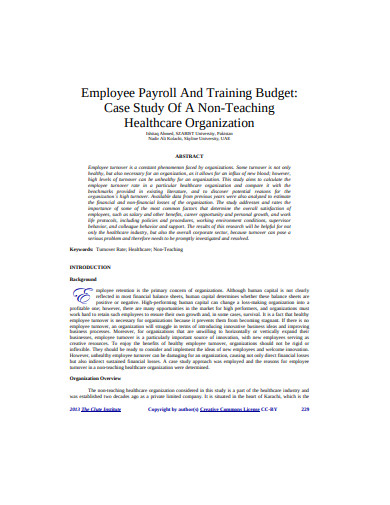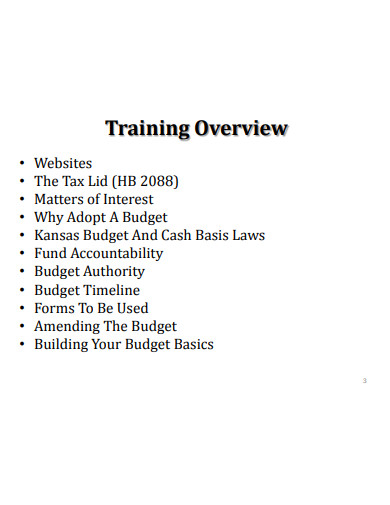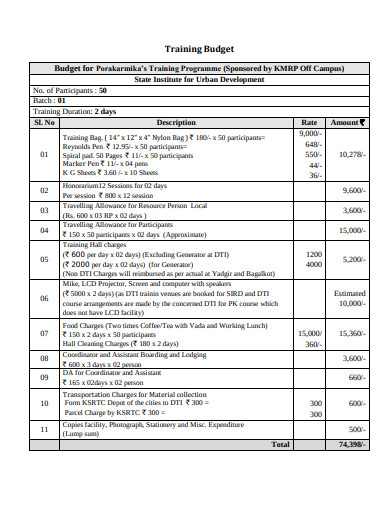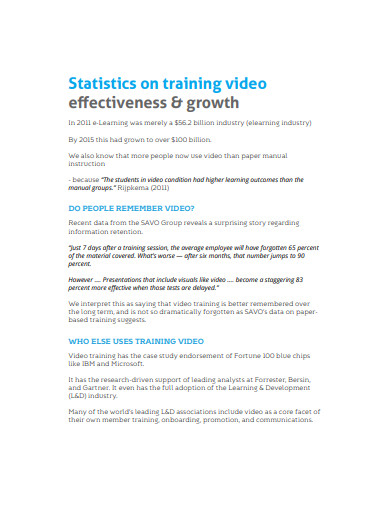12+ Training Budget Examples to Download
Education does not stop after graduation. As you get into the world of business, you’ll realize that some of your organization’s employees or staff and even you still have a lot to learn. And as part of any company’s management plan, you have to make sure that you are ready to render high-quality services for a certain project. This is when training development, such as workshops, seminars, and conventions, takes place. They are undertakings that aim to improve your company’s workforce. Just like other undertakings, it has costs or expenditures. Make sure you handle them easily by creating a training budget on a monthly, quarterly, or annual basis. We can guide you in doing so through our article and examples below! Check them out now!
Training Budget Examples & Templates
1. HR Training Budget Template
2. Municipal Budget Training
3. Manual Budget Training Example
4. Estimate Training Budge in PDF
5. Training Programme Budget
6. Training Budget Management
7. Employees Training Budget in PDF
8. Training Budget Transfer Example
9. Sample Education Training Budget
10. Employee Training Budget Example
11. Training Budget Workshop Example
12. Simple Training Budget Example
13. Sample Training Budget Example
What Is a Training Budget?
A training budget is a document that outlines the financial resources that a company allocated for its training programs. It also details how a company distributes every cent of its total income to each of its expenditures. One of its benefits is that it guarantees any company’s appropriate distribution of fundings to specific training activities, materials, equipment, and other related outgoings. Another benefit of producing the document is that it enables training stakeholders to formulate a strategic action plan, lessen the spendings, and have extra resources for other employee training plans. No matter what kind of training your workforce needs, preparing its budget is highly necessary.
All About eLearning
As mentioned above, a training budget enables an executive to minimize their training agenda’s overall costs. One good way to do so is through eLearning. As the name implies, eLearning is the learning process that uses the internet as its platform, making such a process more accessible, flexible, and cost-effective for trainees. Here are more reasons why eLearning is highly advantageous:
– It saves the trainees ample time and money because it doesn’t require them to travel and book hotels.
– It is accessible 24/7 for eager trainees.
– It involves many effective digital materials, such as informative videos, interactive games, and many more.
– Each of its programs is reusable whenever and wherever the trainees need it.
How To Organize a Training Budget
Preparing a training budget is pretty easy, as long as you have every necessary detail in hand. The question is what these necessary details are. If you’re not sure enough, take heed on our standardized outline ready-made to walk you through in completing your training budget document.
1. Survey the Workforce
Businesses don’t want to waste their financial resources on things they already have. So before setting up your budget, you have to take the time to conduct a training survey and see what your employees have to say about the corporate training plan. While you’re at it, give them a little background of the training plan so they can answer accordingly and not just shoot baseless ones. The results of your survey is also a good indicator if the training plan will be a good investment or not, depending on the volume of the employees who find it favorable.
2. Identify Training Needs
Once you have already gathered the answers to your survey, you can proceed in performing a training needs analysis. This will determine what kind of training program your company employees need. Through it, you can also have an overview of what things you should take into account. Examples of these things include the trainers and consultant salaries, development cost of Learning Management System (LMS), costs for training materials and tools, as well as travel and facility expenses.
3. Plan Training Delivery
There are many training methodologies, such as eLearning, in-class, and Instructor-Led Training (ILT). Each of them requires different training materials, which means that their budget will have different amounts, as well. With that fact, you have to plan carefully, which among the methods as mentioned earlier best suit your employees’ needs.
4. Cost-Cut
By learning the different ways to conduct training, you now have the option to cut your cost. With the advancement of technologies, most training facilitators and organizations prefer to invest in LMS and eLearning. Aside from the fact that they’re the cheaper alternatives, their training programs and schedules are much more beneficial than others.
5. Save Room For Changes
Budgets will never be perfect. Companies can either have them on deficit or surplus. Deficit refers to the unfavorable difference between your company’s income and expenses, while the surplus is the complete opposite. Whichever the case, the document can be altered by will anytime. This is why you have to incorporate a flexible quality to make sure it can cope with sudden and random circumstances that can affect the budget’s settings.
FAQs:
Is eLearning better than classroom-based training?
In terms of price, eLearning is way cheaper than classroom-based training. However, many studies showed that online courses could barely affect employees’ efficiency, skills, and knowledge. In other words, eLearning is cheap but ineffective.
What are some ways to save from training costs?
1. eLearning offers a wide variety of highly convenient online learning options for the end-users.
2. Reusing training materials can save you ample money from making a new one.
3. Train a specific employee and let that employee train his or her co-workers.
4. Opt to have group training so you can get discounts from facilitators or training companies.
What are the benefits of employee training?
1. It makes your employees more efficient.
2. It can make employees feel valued.
3. Employees with proper training can earn more.
4. It can make employees more productive and satisfied.
5. Employees with proper training need less supervision.
“An organization’s ability to learn, and translate that learning into action rapidly is the ultimate competitive advantage.” This was the wise word of former General Electric CEO Jack Welch. Indeed, training your employees serves more advantages than disadvantages. Its downside is all associated with the financial aspect and nothing by purpose. To make sure that there are no disadvantages at all, a training budget has to be done right.




